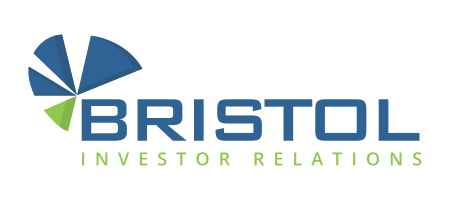Designing an Investor Relations website
Designing an Investor Relations website
Designing an effective corporate investor relations website can be challenging in that it needs to cater to a wide audience – from potential investors to current shareholders, journalists, analysts and everyone in between. When considering if your investor relations website section is up to scratch, consider the following as something to think about to see if your company is keeping up with IR trends and best practices. One should never forget that the IR section is a key marketing tool to educate and promote the company.

- Explain the company’s story and investment proposition clearly. It should highlight important aspects such as milestones of the business, leadership and any other relevant information that would paint a picture in the reader’s mind of who the company is, where they are going and who is manning the ship.
- Keeping up with regulations and disclosure means posting all investor power points, conference calls or presentations, regulatory filings, financials and press releases timeously and ensuring that they are easily visible and categorised. Use the site as a way to archive documents and presentations in chronological order – don’t take them down after a few months as it is helpful to the user to see history and context.
- Ensure the IR section is optimised for reading on any mobile or handheld device. According to a 2014 IR App survey of 300 institutional investors, 83% of investors rely on mobile devices when it comes to their work with 68% consistently looking at IR content on a mobile device. This further highlights the need for optimal viewing and functionality anywhere and anytime. Gone are the days when information is just viewed on desk tops – now it’s laptops, tablets, smart phones and other devices.
- Use pictures, graphics, charts and videos and podcasts where possible – its easier to understand and let’s face it, multi media is slightly more interesting than static black and white words on a page!
- Search engine optimization is important. According to hubspot.com, “over 10 billion searches are conducted in the U.S. alone every month,” so SEO is very important as it helps search engines find your website to drive quality traffic, increase visibility, and improve brand image and credibility amongst such an immense amount of information. Business2community.com found that, “using organic SEO techniques and a pay- per-click campaign together you can expect to receive 25% more clicks and 27% more profit versus using just one or the other”.
- Keep in line with the corporate brand identity – from colours and logos to the general look and feel. This will ensure a seamless experience for the reader and end user. Brands like Nike and Live Nation do this particularly well and make it more visually appealing to navigate your way around the information.
- Make sure all the most important information is labeled, titled and easy to find, often within one click. This includes information such as contact details, share price information, financials, upcoming events etc. No one wants to have to scroll through a website and search for information that should be easily displayed. If it’s not, you run the risk of the reader abandoning the search and logging off the site. Use clear and simple language and labelling so that all audiences can understand and navigate their way around the site. This is often taken for granted with people close to the subject matter that tend to use jargon and industry specific terms.
- Consider the use of relevant social media and decide if it fits into the company’s IR strategy. Twitter, LinkedIn and other platforms can be useful to certain companies in communicating their IR message and relevant content to various audiences.
- Ensure that the visitor has the ability to leave personal contact information and to opt into an email distribution list to receive regular company news or updates.
- Be open to new and creative ways in which you can use investor relations to paint your company in the best light. Who would have thought ten years ago Twitter would be a useful medium to communicate investor relations content to relevant stakeholders?

In summary – everyone has their own opinion on what makes a great IR website and their favourite examples of companies that do it well. Keeping in mind that the IR section has three main functions, namely to keep information updated regularly, clearly labelled and easy to navigate through and in a format that is easy to understand; the presentation and execution of this can vary hugely. This is where creativity, best practice and originality collide to elevate an IR section from good to best.
Sources:
Blender Media
IR Magazine
CIRI
CIRI wIRed magazine
London Stock Exchange
SCC
hubspot.com
Business2community
